

Research/Best Practices. Assistive Technology and Mild Disabilities. A Glimpse at Current Teaching Practices with Preliminary Survey Results. Effective Teaching Practices and the Barriers Limiting Their Use in Accessing the Curriculum: A Review of Recent Literature. AT Tools and Resources. Assitive Technololgy: A Parent's Guide. Assistive Technology Tools - GreatSchools.org. Assistive technology tools: Writing Find out how to select assistive technology tools that address your child's specific writing difficulties.
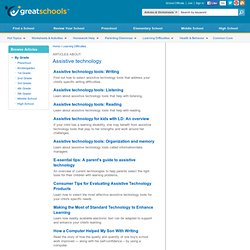
AT Tools for Transition from HS to College. UDL Tools and Resources. UDL Tool Kit. National Center On Universal Design for Learning. CAST UDL Lesson Builder. Differentiation Tools and Resources. Differentiation and the School Library: Prezi and Video. Differentiation with Kari and Bill Differentiated Instruction and the School Library Resources: Marzano, Robert J.

What works in schools : translating research into action. Alexandria, VA: Association for Supervision and Curriculum Development, 2003. Tomlinson, Carol A. Tomlinson, Carol A., and Susan D. Tomlinson, Carol A. ---. Tomlinson, Carol A., and Jay McTighe. Wiggins, Grant P., and Jay McTighe. Koechlin, Carol, and Sandi Zwaan. Loertscher, David, Carol Koechlin and Sandi Zwaan. Loertscher, David, Carol Koechlin, and Sandi Zwaan.
Loertscher, David, Carol Koechlin, and Sandi Zwaan. Loertscher, David, Carol Koechlin, and Sandi Zwaan. Zmuda, Allison and Violet H. "Keep Calm Carry On" The original image is in the public domain and is freely available. Inclusion in the 21st-century classroom: Differentiating with technology - Reaching every learner: Differentiating instruction in theory and practice. In this video, students in a gifted classroom use the multi-user learning environment Quest Atlantis to explore issues related to the creation of a game reserve in Tanzania.
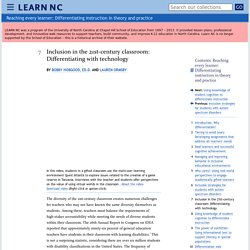
Interviews with the teacher and students offer perspectives on the value of using virtual worlds in the classroom . About the videoDownload video (Right-click or option-click) The diversity of the 21st-century classroom creates numerous challenges for teachers who may not have known the same diversity themselves as students. Among these, teachers must balance the requirements of high-stakes accountability while meeting the needs of diverse students within their classroom.
The 26th Annual Report to Congress on IDEA reported that approximately ninety-six percent of general education teachers have students in their classroom with learning disabilities. Differentiation as effective instruction Overcoming obstacles to effective differentiation Setting the scope A framework for technology integration.
Differentiation Central. Legal Issues in AT. Print Access and Copyright Law. Beth Mineo DATI Director Sometimes schools will say that they are precluded from providing text alternatives to students with print disabilities because they are concerned about violating copyright law.
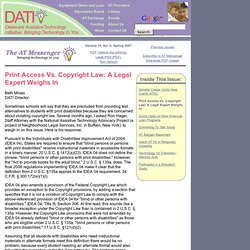
Several months ago, I asked Ron Hager, Staff Attorney with the National Assistive Technology Advocacy Project (a project of Neighborhood Legal Services, Inc. in Buffalo, New York), to weigh in on this issue. Here is his response: Pursuant to the Individuals with Disabilities Improvement Act of 2004 (IDEA 04), States are required to ensure that "blind persons or persons with print disabilities" receive instructional materials in accessible formats in a timely manner. 20 U.S.C. § 1412(a)(23). IDEA 04 does not define the phrase, "blind persons or other persons with print disabilities. " 1. All four categories listed above require that a person's eligibility be certified by "competent authority.
" 2. A big “thank you” to Ron for his insightful analysis of this complex issue! Digital Rights Management: Pitfalls and Possibilities for People with Disabilities. This paper was refereed by the Journal of Electronic Publishing's peer reviewers.
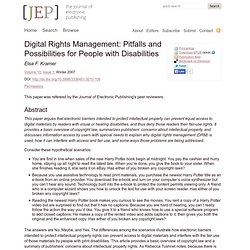
Abstract This paper argues that electronic barriers intended to protect intellectual property can prevent equal access to digital materials by readers with visual or hearing disabilities, and thus deny those readers their fair-use rights. It provides a basic overview of copyright law, summarizes publishers’ concerns about intellectual property, and discusses information access by users with special needs to explain why digital rights management (DRM) is used, how it can interfere with access and fair use, and some ways those problems are being addressed.
Consider these hypothetical scenarios: You are first in line when sales of the new Harry Potter book begin at midnight. The answers are No, Maybe, and Yes. Disability Law and Copyright Publishers rely on copyright laws primarily to protect their works from unauthorized reproduction or redistribution. The Chafee Amendment to the U.S. Some Responses to DRM. Cloud Computing Brings Legal and Policy Issues to Public Schools « edtechlaw.com. Student privacy must be a priority for school districts.
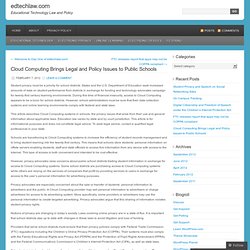
States and the U.S. Department of Education seek increased amounts of data on student performance from districts in exchange for funding and technology advocates campaign for twenty-first century learning environments. During this time of financial insecurity, access to Cloud Computing appears to be a boon for school districts. However, school administrators must be sure that their data collection systems and online learning environments comply with federal and state laws. This article describes Cloud Computing systems in schools, the privacy issues that arise from their use and general information about applicable laws. Schools are transitioning to Cloud Computing systems to increase the efficiency of student records management and to bring student learning into the twenty-first century. Privacy advocates are especially concerned about the sale or transfer of students’ personal information to advertisers and the public.